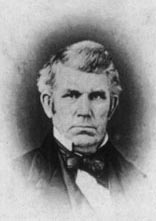Epaphroditus Ransom
| Epaphroditus Ransom | |
|---|---|
 |
|
| 7th Governor of Michigan | |
|
In office January 3, 1848 – January 7, 1850 |
|
| Lieutenant | William M. Fenton |
| Preceded by | William L. Greenly |
| Succeeded by | John S. Barry |
| Member of the Vermont House of Representatives | |
| Member of the Michigan House of Representatives | |
| Personal details | |
| Born |
March 24, 1798 Shelburne Falls, Massachusetts |
| Died | November 11, 1859 (aged 61) Fort Scott, Kansas |
| Political party | Democratic |
| Spouse(s) | Almira Cadwell Ransom |
| Religion | Episcopalian |
Epaphroditus Ransom (March 24, 1798 – November 11, 1859) was the seventh Governor of Michigan and Michigan Supreme Court justice from the U.S. state of Michigan.
Ransom was born in Shelburne Falls, Massachusetts. There is disagreement about the year of his birth, sometimes given as 1787, 1796, 1797, or 1798. Sources have also shown two different dates of death, November 9 and 11. His tombstone shows he died at the age of 61 on November 11, 1859, which agrees with the 1798 year of birth.
He was the fourth of twelve children and was educated at various schools in New England, such as Chester Academy of Vermont for four years. He studied at Northampton Law School in Northampton, Massachusetts receiving his degree in 1823, and then began his own practice in Townshend, Vermont. He married Almira Cadwell on February 21, 1827 in Montpelier, VT and they had four children, yet two would die during infancy. He was elected to the Vermont House of Representatives, but after seeing his siblings move to Michigan Territory as well as receiving advice from former Vermonter and Michigan Territorial delegate, Lucius Lyon, decided instead to move his family there in 1834.
After over a month of traveling by wagon and steamboat, the Ransoms arrived in Michigan Territory on November 14, 1834 in the small town of Bronson, which is now Kalamazoo, Michigan. There he gained admittance to the bar and began practicing law. He took up farming and other business ventures and soon became active in politics. He served in the state legislature and became that area's first circuit court judge, riding horseback through the wilderness to hear cases.
...
Wikipedia
